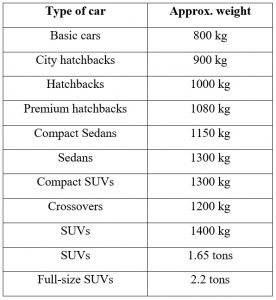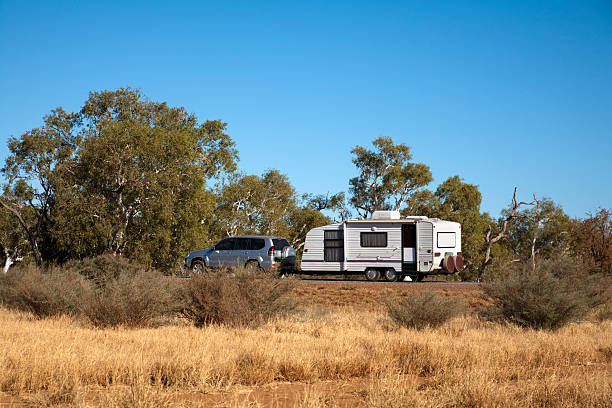how much does a car weigh?

- 700-2000 kgs
- 1,523 – 4,409 pounds
A car can weigh anywhere from about 700 kilograms to 2000 kilograms or more. The weight of a car varies according to the car model and make. When it comes to an average car weight, it depends on what kind of car one considers to be average. No matter how one looks at it, it is imperative to know approximately how much a car weighs.
However, a car’s weight mostly depends on one segment. Therefore, a bigger car will weigh more than a smaller car. The section, where large and heavy cars are found, like the full-size SUVs, could weigh up to 2 tons or more. Lighter cars like supercars or hypercars could weigh less than 200 kilograms simply because of the materials such as carbon, fiber, aluminum, and magnesium used during manufacture.
Here are some of the examples of the approximate weight of an average car are categorized in specific segments as follows:


Knowing a car’s weight is very important for one’s automotive safety. A car’s primary function is transportation, and it is only possible with a person driving or monitoring it. Therefore, knowing its weight becomes an essential part of safety as one gets to know how a car or truck functions on the road in comparison to other vehicles. It also helps in determining the value of a vehicle.
Types of Vehicle Weight

A considerable variation in the weight of an automobile is dependent on the size of the engine and parts used during production. It also depends on the class of the car.
There are many types of weights when it comes to a vehicle. However, the two most important and commonly known car weights are the Curb/ Kerb weight and the Gross Vehicle Weight (GVW). These are the terms usually found on the compliance plate and the owner’s manual of a car.
Curb Weight
Curb weight is also known as Kerb weight, and it is the actual weight of a vehicle with 90% fuel in the fuel tank, including all the factory-installed equipment. Curb weight is the weight of the vehicle with all fluids and its components. It does not include drivers, passengers, and cargo. In other words, it is the heaviness of a car when it rests on a curb.
Gross Vehicle Weight (GVW)

Gross weight is the overall weight of the car, including the curb weight, passenger, luggage, and additional items not provided by the manufacturer of the car.
Depending on the Curb weight or the Gross vehicle weight alone, the buyer of a car may not be able to determine or analyze the purpose for which the car is to be used. It is also not enough to know how much load a car or truck can carry.
Besides the curb weight and gross vehicle weight (GVW), there are other types of weights like payload, gross vehicle weight rating (GVWR), gross combined weight, maximum loaded trailer weight, axle weight, and axle weight rating. These are the weights that are not given much attention by the consumers despite it being published by the manufacturer.
It is essential to know what they mean as it can change the outlook on purchasing a car. Knowing what a car can carry, how much load it can bear, and also where a car can be driven depends on the following weights of a car.
Payload

The weight, which includes the driver, passengers, additional items, and any other things that are being towed, is known as the payload. It is the number of goods and materials carried by the vehicle. To calculate the payload capacity of one’s vehicle, you need its gross vehicle weight rating (GVWR), which shall be further explained below and the curb weight.
Subtract GVWR with the curb weight to know a vehicle’s payload capacity.
For example, if a car is having a GVWR of 1,688 kilograms, and a curb weight of 1,262 kilograms, simply subtract 1262 kilograms from 1688 kilograms to find the payload capacity.
Therefore, subtracting 1262 kilograms (curb weight) from 1688 kilograms (GVWR) will provide the answer. And so, the payload capacity will be426 kilograms.
Gross Vehicle Weight Rating (GVWR)

GVWR is the weight limit that is set by the manufacturer. It takes into account the base curb weight of the vehicle and also adding the weight of any additional accessories, cargo, and passengers. This is the maximum total weight of a vehicle inclusive of passengers, and cargo. Beyond the manufacturer’s listed GVWR, a vehicle should never be loaded.
Gross Combined Weight
It is a specific weight which includes the fully loaded weight of a tow vehicle and the trailer that is attached to it determined by the automaker. This weight would include the vehicle and a trailer, assuming there is one. It is to be kept in mind that the gross combined weight is only supposed to be calculated while the vehicle has a trailer attached to it.
Maximum Loaded Trailer Weight
The maximum loaded trailer weight and the gross combined weight are very similar. The only difference is that it deals with a trailer that is loaded to its maximum or is fully loaded.
Gross Axle Weight

The gross axle weight is the amount of weight which both the front and rear axle provide to support a vehicle. The central shaft for a gear or rotating wheel of a car is called an axle.
Gross Axle Weight Rating
Gross axle weight rating is the specific weight that is to be allowed on an individual axle determined by the manufacturer, which one should not cross. So in simple words, GAWR is the weight limit for each of the vehicle’s axles (front and rear) – a weight limit determined by the automaker/ manufacturer.
The main logic for the automakers to provide a specific limit on how much a vehicle’s axles are supposed to carry is safety. Automotive safety is a priority. Putting an extra load on any vehicle is very dangerous and more so if the axles are overloaded and distributed unevenly.
Dealing with safety and precautions, a car’s weight is one of the most important criteria to consider while or before purchasing a car. Crossing the limit of any car’s weight limit set by the manufacturer can lead to various risks. Overloading a vehicle can cause many problems within the components of a vehicle itself. For example, the steering wheel may become less responsive because of the excess weight. So the overall handling of the vehicle will be significantly affected.
The brakes of a car may not function properly or effective enough to slow down a vehicle substantially. The tires may overheat because of the overload, and it may potentially cause a blowout situation, which can be risky. It can also cause mechanical failure since overloading and overstressing components in a car can cause accidents since one is not able to handle the car while on the road.
Keeping in mind all of these should never cross the weight limit that is determined by the manufacturer.
How to find the weight of a certain vehicle?
With social media and the internet, it is not difficult to know the exact weight of a particular vehicle. Besides, there are plenty of websites dedicated to cars alone, and therefore extracting the information would be a piece of cake. Some of the sources that provide car weight information are as follows:
1. Manufacturer:
One can call the customer service number that is provided in the manual and give them the details of the car to know what one is looking for.
2. Driver’s side door sill or jamb:
It is straightforward to locate the weight label of a car. Open the driver’s side door of the car and find the weight label, which is usually in the form of a sticker on a sill.
3. Car manual:
This is a no brainer. One can look up for specifications in the provided car manual.
4. Vehicle scale:
If none of the above options are available, you could always load the car on a vehicle scale to determine its weight.
Conclusion
There is another crucial point to keep into consideration when it comes to a car’s weight. It is the maximum weight of a car for roadways. The different states establish individual weights of a car that can travel on highways and various states in a country. It is important to know the weight limits of the state or country one belongs to. If concerned, it is a good idea to consult or inquire about a weight chart for a state or province that is to be traveled. This way, all the unnecessary trouble, and woes can be avoided.
If you liked this article make sure to check out: Can you push start an automatic car and can you drive with a blown head gasket








